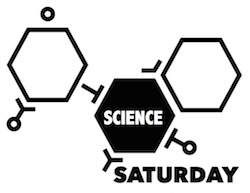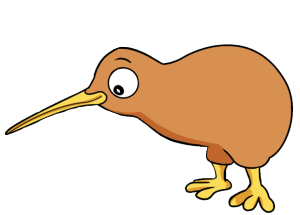 Kia ora! You may (or may not) have noticed that the semi-regularly occurring Science Saturdays column has been off the radar for a little bit. This was due to my inability to keep up with my writing duties while travelling in New Zealand. I was there with a group of UVM graduate students, travelling and visiting schools. I visited five different public schools and two of their brand new charter schools. One thing that really struck me was the model of how they incorporate science into their middle schools, which is what I would like to share with you today. I think seeing how other systems do things can help us look at our own practices and assumptions with fresh eyes.
Kia ora! You may (or may not) have noticed that the semi-regularly occurring Science Saturdays column has been off the radar for a little bit. This was due to my inability to keep up with my writing duties while travelling in New Zealand. I was there with a group of UVM graduate students, travelling and visiting schools. I visited five different public schools and two of their brand new charter schools. One thing that really struck me was the model of how they incorporate science into their middle schools, which is what I would like to share with you today. I think seeing how other systems do things can help us look at our own practices and assumptions with fresh eyes.
The New Zealand public school system is structurally different from our own. As their nation only approximately 4.5 million people, the entire education system functions somewhat like a state system. They have a national curriculum that is broad in nature, which allows individual schools a lot of room to adapt. Individual schools have their own boards consisting mostly of parents, and the principal and board together have control over funding decisions, pedagogical models, and the structure of the school day. The public schools that we saw included a highly tech-centered middle school, a K-8 that concentrated on philosophy and the whole child, and a high school that allowed student cultural identity to be central to how they did education.
One feature that was fairly common was the inclusion of tech at the middle level. These classes include things such as cooking, woodworking, technology, and coding, Also included in this category is science. Instead of incorporating science class into the normal class day, it is held in a separate classroom. Students may only have this class for half the year, or once every five or six days. Initially, I was rather taken aback. It feels as though it was such a marginalization of a very important content area. The science rooms that I saw were lively and well equipped; one class was dissecting sheep hearts as I walked through, another had constructed trebuchets for a physics investigation. But without more time dedicated to the class, how would they learn to have a scientific mindset, to conduct investigations?
When I was talking with teachers, this model of science having an external time and place didn’t seem to concern them. However, they also talked about something that was central to their classes: the inquiry model. Different schools had slightly different versions of it, but it was basically the scientific method, as it is generally defined. Observe, identify something to investigate, research, make a test, share out, and reflect. One principal talked about “perturbing events” that cause students to question their thinking and spawn investigations. Sometimes students investigated scientific concepts, but it seemed to be more common that these inquiries would be multi-disciplinary projects on topics that truly interested the students.
didn’t seem to concern them. However, they also talked about something that was central to their classes: the inquiry model. Different schools had slightly different versions of it, but it was basically the scientific method, as it is generally defined. Observe, identify something to investigate, research, make a test, share out, and reflect. One principal talked about “perturbing events” that cause students to question their thinking and spawn investigations. Sometimes students investigated scientific concepts, but it seemed to be more common that these inquiries would be multi-disciplinary projects on topics that truly interested the students.
But is that enough to sideline science for a bulk of the week or year? I’m still not sure. I worry that if teachers aren’t asked to be able to specifically teach science, they may not fully support students in a scientific inquiry. And having the class separately may cause students to draw a dividing line in their heads between the interrelated maths, reading, social studies, and writing that happens in their main classroom and the topics they learn in the science room. I did not get a chance to ask students about this, but it feels as though it could be an interesting line of inquiry.
I will add that this was only in middle schools, and that at the high school level science is taught as a subject. New Zealand continued to be a top performer internationally in science on the 2012 PISA, but their scores had slipped significantly. There is talk in the media to shore up science education, but it is unclear how these independently functioning schools will respond to those comments.
Just one last semi-related thing to add: seeing wood shop and metal shop continue to be incorporated was great. One class I walked through was going through the engineering process, and were at a drafting stage with their skateboards. This support for engineering and then the ability for every student to get to make and create was good to see. I also really liked that these schools still had a cooking class, and often incorporated ingredients from the school garden. I feel that many schools in the US feel the pressure to narrow the curriculum in order to achieve test scores or hit standards. These classes that supported the whole child and let the student explore their interests took me back to my own junior high days, where we cooked and sewed and changed the oil on teachers’ cars.
Thoughts about taking science out of the regular classroom? Have you seen different models in schools in different contexts? Let us know in the comments. And, as per usual, if you have a class or a group of students working on a innovative, engaging, or just plain fun project that you would like to share, just let us know!


Separate Science in New Zealand http://t.co/Bqe3t6xEWj
Time for Science Saturday! Separate Science in New Zealand – Innovation: Education http://t.co/TyihuojGE3
It’s science saturday! Separate Science in New Zealand http://t.co/byvtRqrpLk via @innovativeEd
Separate Science in New Zealand http://t.co/TgVtsUJ9mm via @innovativeEd & @mwolofson